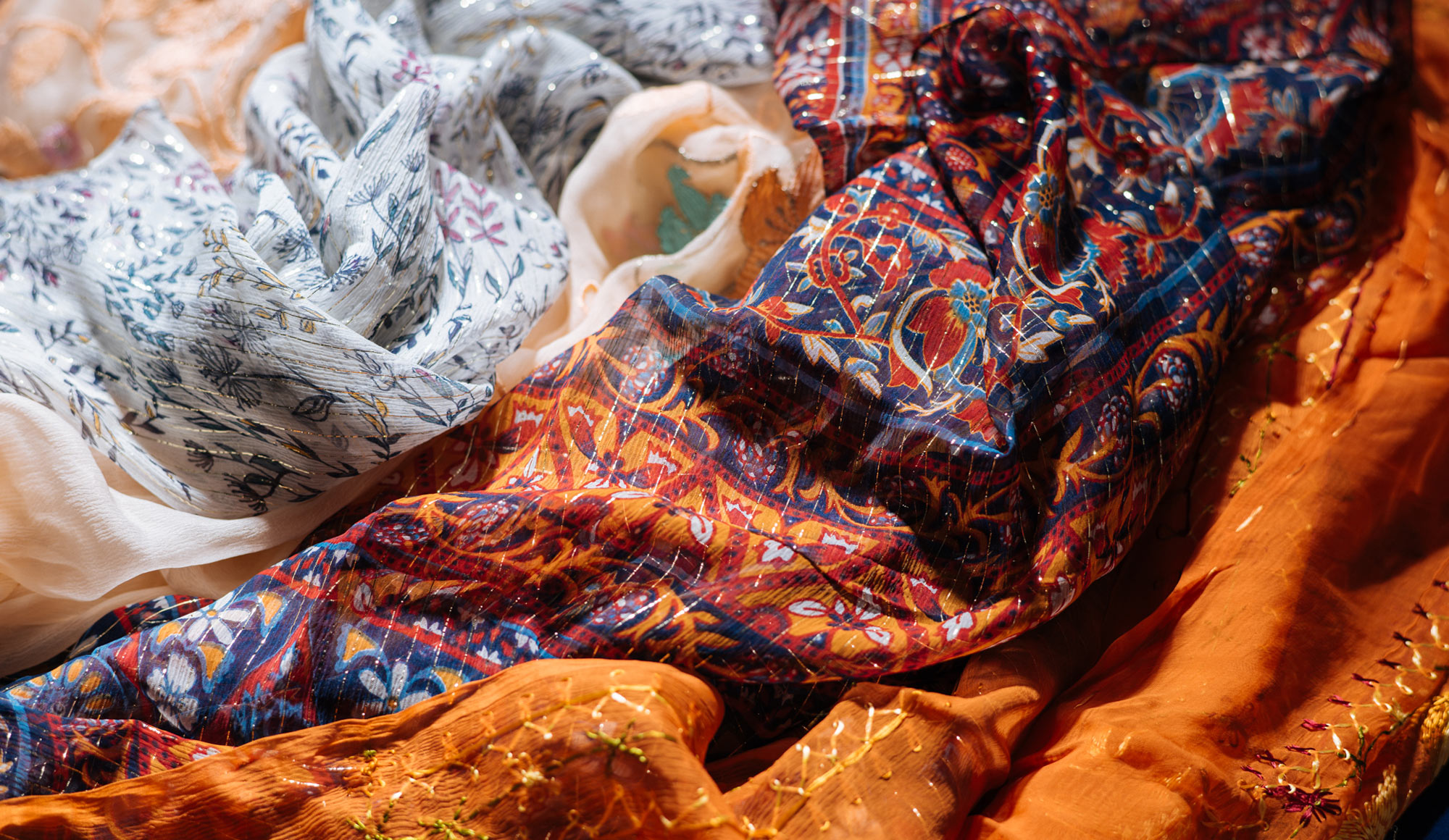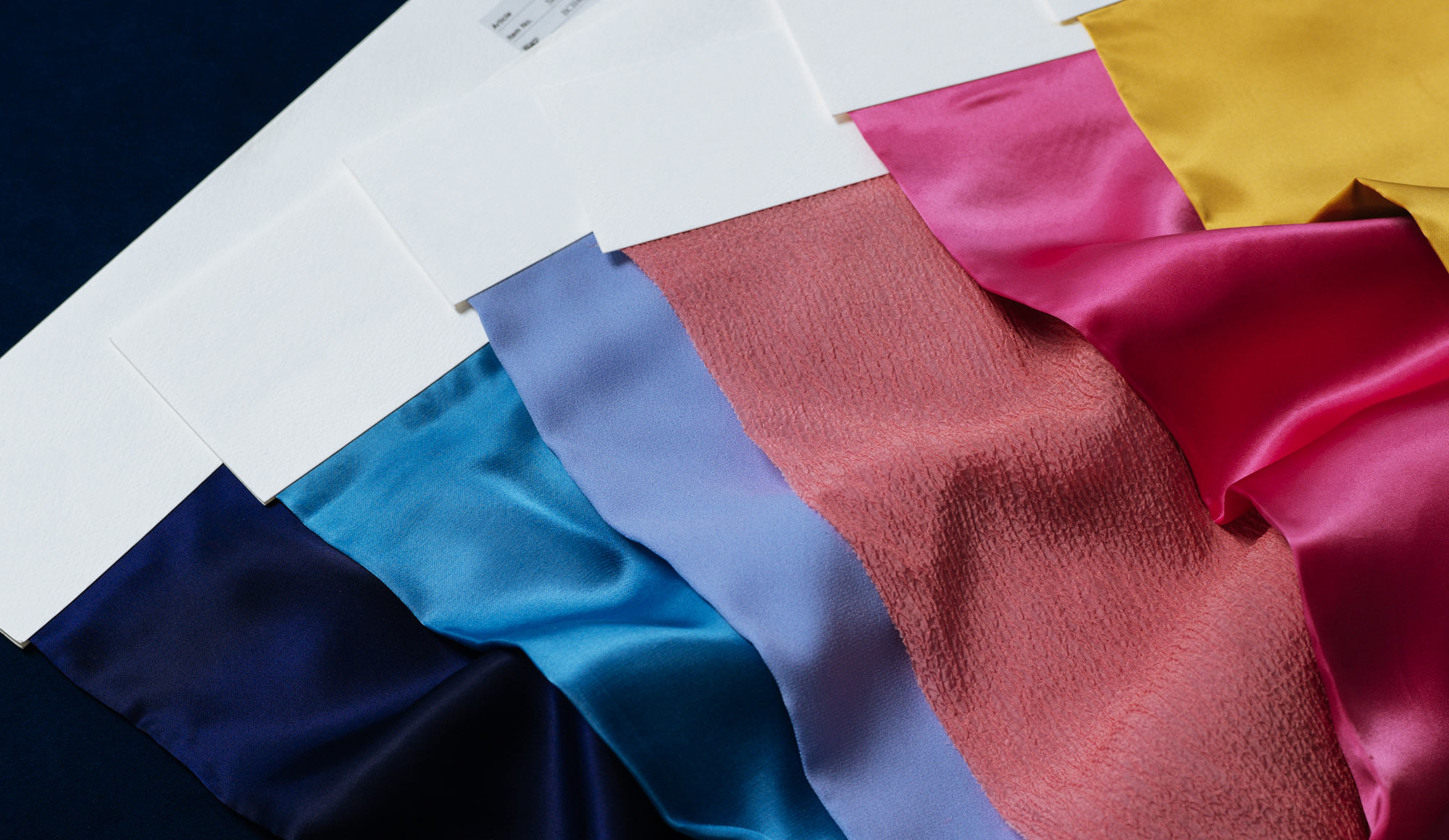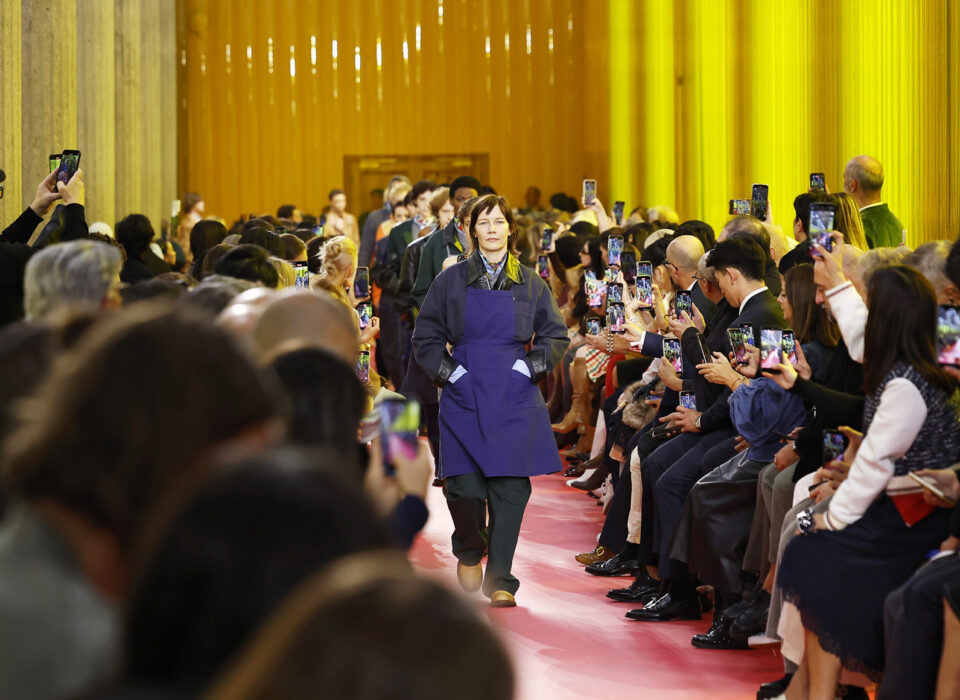

- VOICE
- NAKAMURA COLUMN
- TEXT : NORIKO NAKAMURA (Asahi Kasei, Bemberg™ Coordinator)
Fostering a Love of Textiles
-
The first time I became aware of the material cupro was a quarter of a century ago, when I, who was student, saw a TV commercial. Strangely, because of that commercial, “cupro” remained clearly in my memory. After that, I happened to come across a flared skirt made from cupro at a small boutique in my hometown of Kyoto. I was so happy to find something made using “cupro”, the material I had seen in the commercial, so I bought it without thinking, but the satin skirt was… It was a product that encapsulated the best aspects of cupro: elegant luster, beautiful drape, and smooth texture. And now that I think about it, I feel like that skirt that I loved when I was a student was my first experience of “feeling fabric”.
*Cupro : a material name of regenerated cellulose fiber
Bemberg™ : Asahi Kasei’s brand of cupro
-

“I was hired by Asahi Kasei and got involved in promoting Bemberg™ in India. There I learned about the unique perception of fabrics in India.”
More than ten years later, I happened to be hired by Asahi Kasei and became involved in promotional activities for Bemberg™ especially in India, as well as in apparel market research.
Bemberg™ has been exported to India for over 45 years. Since its inception, it has been mainly used for traditional women’s clothing such as sarees and dupattas (large stoles), and this has not changed much even up to the present day, but in recent years, as the Indian market has become a little more Westernized, Bemberg™ is also used for items such as dresses, tunics and blouses.
Sometimes I research materials at local stores, but I often encounter situations that I don’t often experience in Japan, Europe or America. For example, a conversation might go something like this:
Me: “What material is this saree made from?”
Store clerk: “Georgette”
Me: “Ummm, do you mean silk georgette, or viscose?”
Store clerk: “Silk! Everything in this shop is silk.”
When I go to India, I often repeat exchanges very similar to this. The word “material” itself may be ambiguous, but the name of the material and the name of the weave are confused, and types of weave such as georgette, chiffon, and crepe seem to come before the material itself or the blend ratio.
Even on Indian apparel e-commerce sites, the blend ratio is sometimes not specified, and some products are described with “Fabric: silk”, while others are written as “Fabric: crepe”, and it is common to see confusion and mixing of materials and weaves. From a Japanese perspective, such notation would be a mistake. However, I personally find this seemingly customary notation system – a method of recognition that seems to place emphasis on the feel and texture of fabrics – to be interesting, and by exploring this Indian way of classifying materials, I was able to understand how Indians perceive things. I was delusional in thinking that I might be able to make a cultural anthropological discovery that would underpin all of my views.
“First, recognize the material, touch it, and feel it. Admiring the material leads to experiencing daily life with a higher resolution.”
Furthermore, as in other markets, interest in sustainable materials is increasing in India as well, and brands that place importance on sustainable materials are requested to clearly indicate cupro or Bemberg™ in the fabrics used and blend percentage on product tags and e-commerce sites. Therefore, compared to a while ago, I have become more hopeful that the names cupro and Bemberg™, as well as their sustainability properties, may become slightly more well-known in the Indian textile industry and among general consumers. I don’t think that the Western concept that “perception through words creates the world and values” will apply the same way in India. Traditionally, it is thought that Indians’ recognition and perception of things occur on a different level from that of Japanese and Westerners, but even taking into consideration the rapid progress of internationalization, this still seems to be the case. We believe that it is important for people to know the name of the material, and this is a positive trend for Bemberg™. Starting with the sustainable material Bemberg™, I hope that by touching the fabric and feeling its texture, it will become a material that is even more loved in India.
-
Silk, cotton, linen, cupro, rayon, polyester, and other materials each have their own unique character, and are sometimes combined or blended to create fabrics with various structures, giving the finished product a new look. The combination of material name and the way it feels to touch, such as the viscosity of silk or the dry touch of linen, creates value.
The key to convert cupro‘s characteristics of coolness, smoothness that blends into the skin, and bouncy firmness into value is to first identify and recognize the material, as I experienced in my student days. I guess it starts with this. In other words, knowing the material leads to appreciating it and stimulating people’s senses. In turn, it will invite us to enjoy our daily lives with even greater resolution. As an employee of a textiles manufacturer, I would like to take advantage of this opportunity to write articles that can help with this.
( ASAHIKASEI PR )





